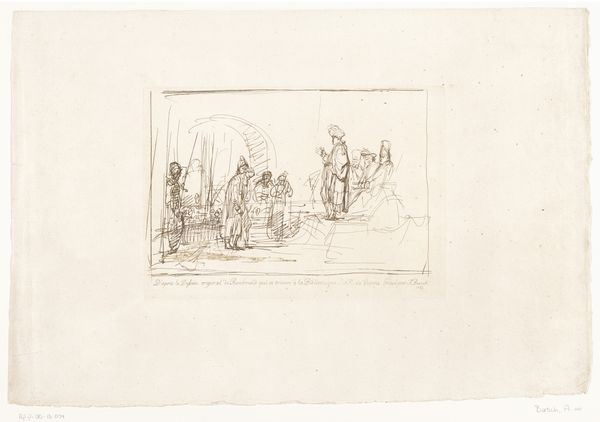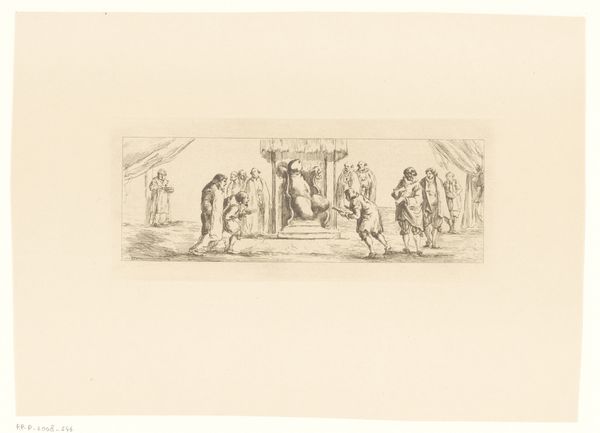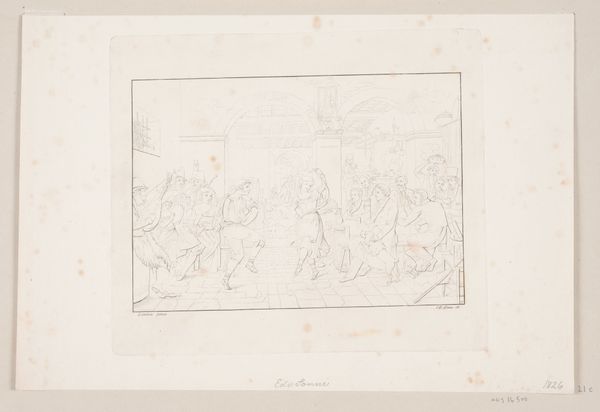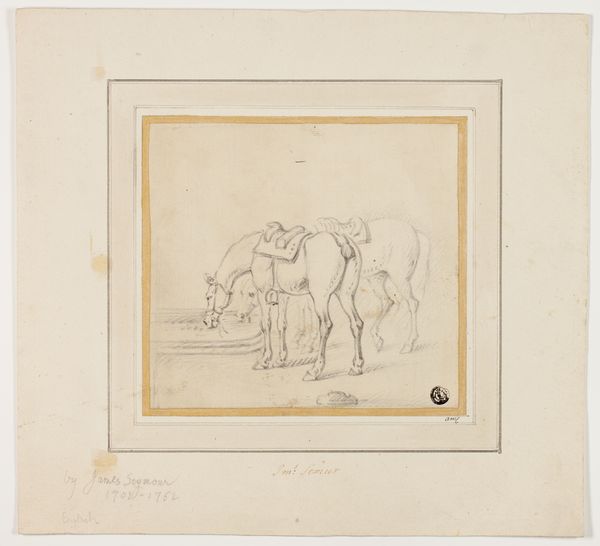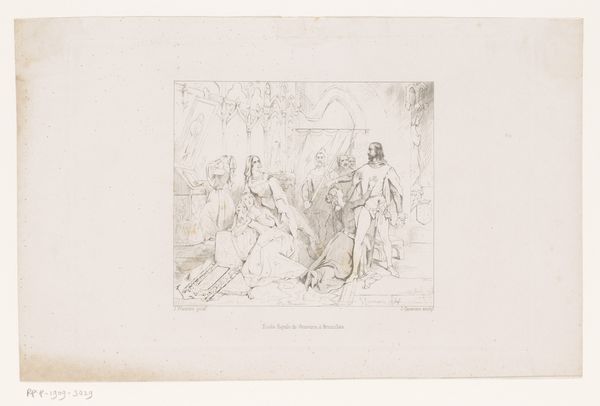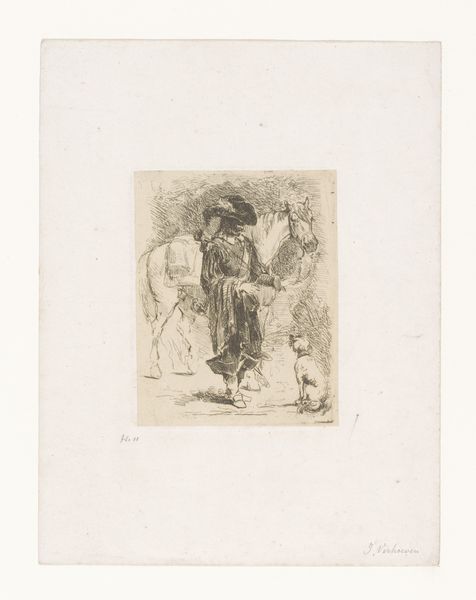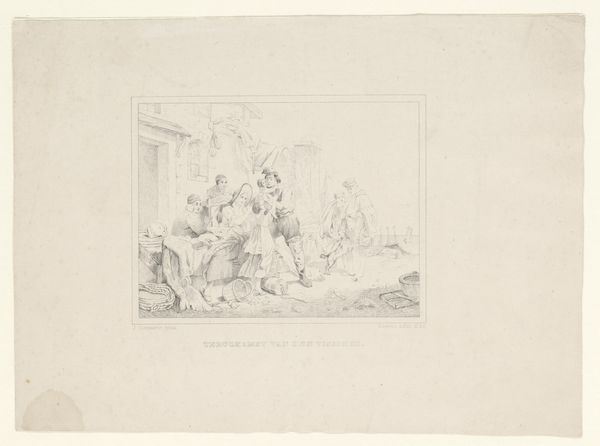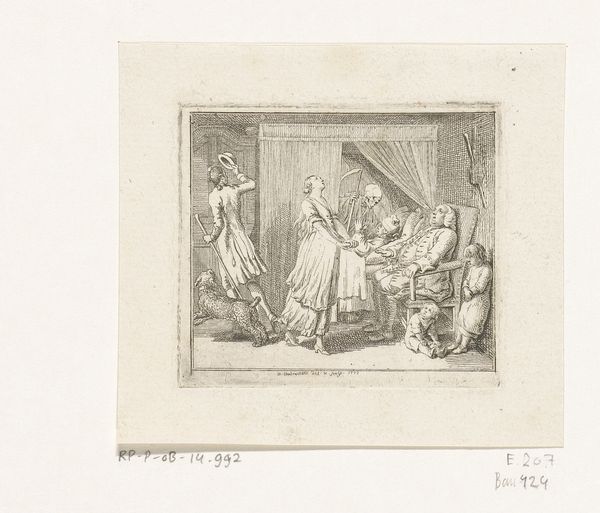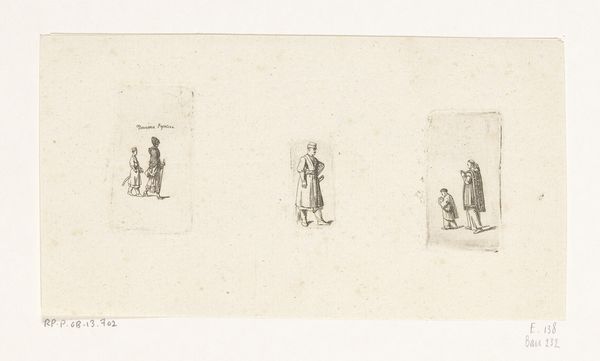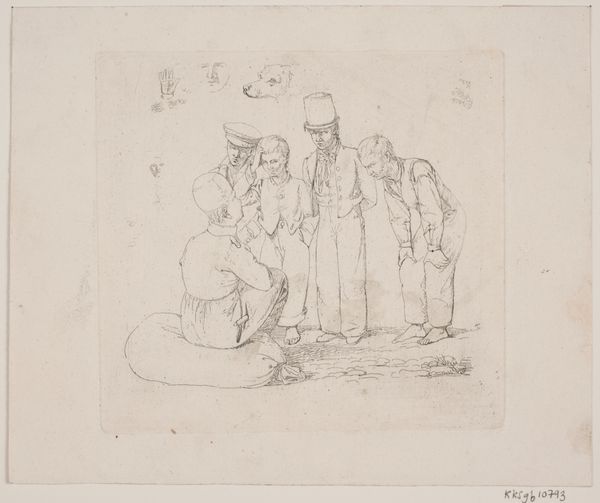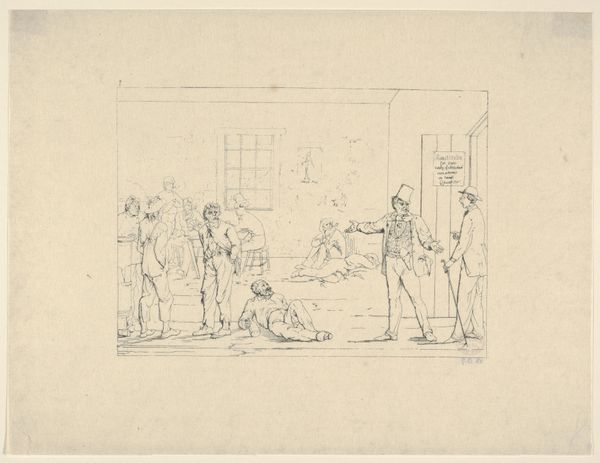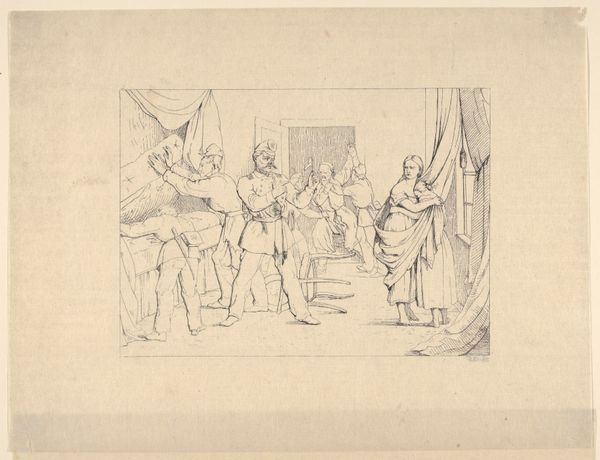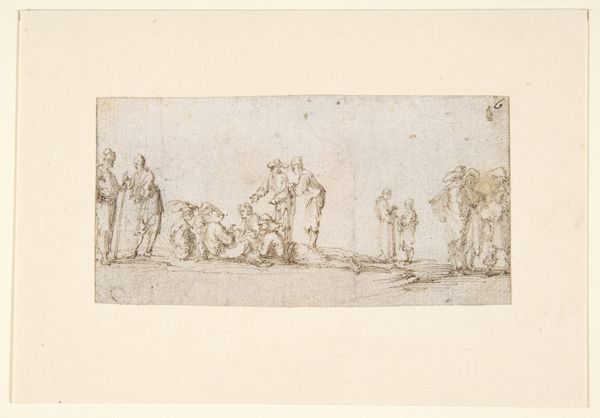
print, etching, engraving
#
narrative-art
# print
#
etching
#
etching
#
figuration
#
line
#
history-painting
#
engraving
#
realism
Dimensions: 89 mm (height) x 118 mm (width) (plademaal)
Editor: This is Carl Bloch’s "Christ Heals the Lame Man," an etching and engraving from 1881, held at the Statens Museum for Kunst. I'm struck by the linear quality – it's so delicate, almost skeletal. What structural elements stand out to you in this print? Curator: Notice how Bloch orchestrates space through line alone. The etching technique lends itself to fine gradations of tone, yes? See how varying the density of lines defines form, suggesting volume and shadow. What does the strategic deployment of line contribute to the overall composition and narrative? Editor: It makes some areas appear weightier and others ghostly. The figure of Christ feels particularly substantial even though the linework seems so minimal. Is this contrast deliberate, setting him apart? Curator: Precisely. Observe the stark contrasts in the rendering of textures—the smoothness of Christ's robes against the implied roughness of the surrounding environment. This highlights a visual hierarchy and, arguably, a theological one. Consider the economy of means. What does this restraint tell us about Bloch’s artistic intent and his understanding of printmaking? Editor: It feels intentional – not accidental – the minimalism serves to emphasize certain figures and textures. Is that a fair interpretation, focusing on the relationships created? Curator: Indeed. The careful calibration of light and shadow is masterfully achieved using purely linear means. What impact might that specific visual language create? Editor: It almost elevates line into the expressive substance itself, emphasizing clarity and the composition's formal structure as fundamental to the viewing experience. Curator: Very good.
Comments
No comments
Be the first to comment and join the conversation on the ultimate creative platform.
